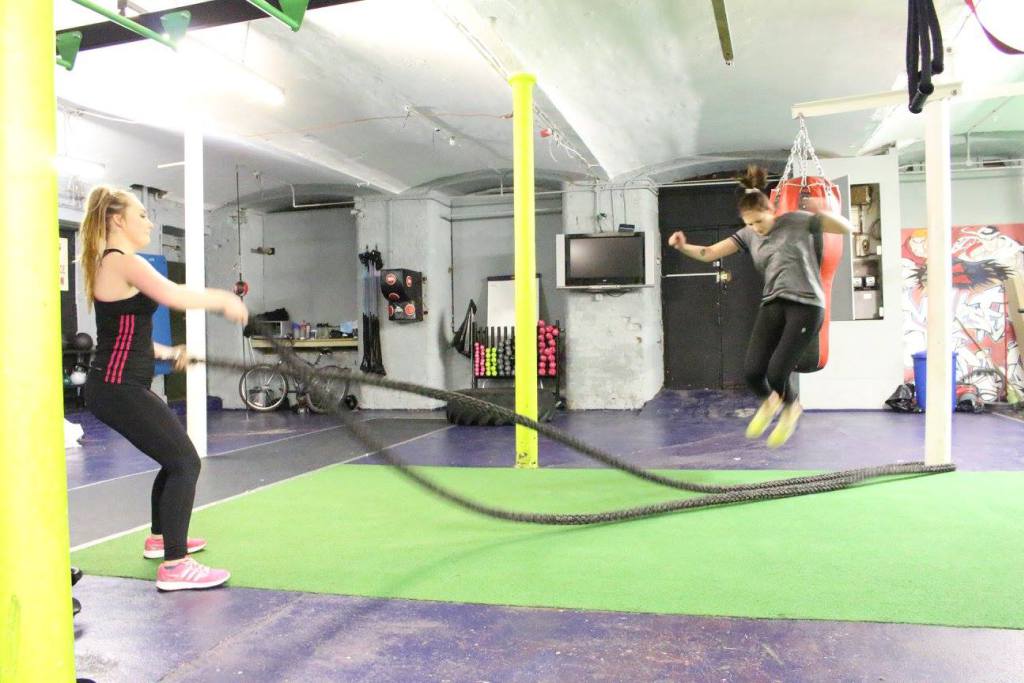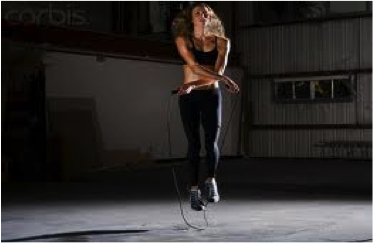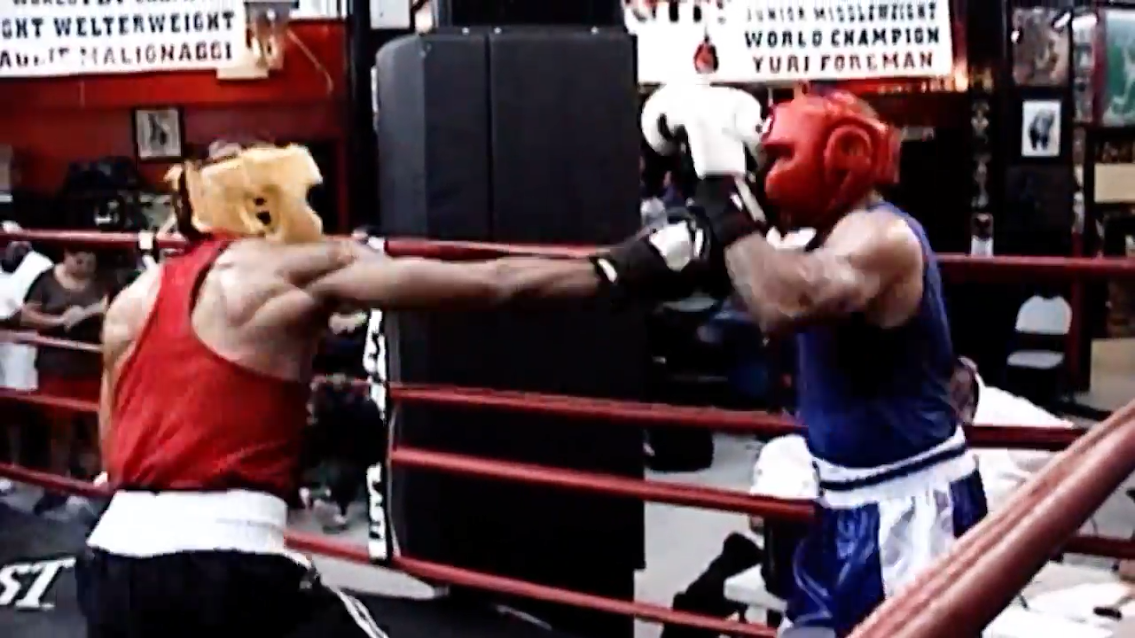Do you ever get tired of doing the same boring cardio routine on the treadmill? Let’s explore some of my favorite movements to make cardio exciting, help you burn fat, improve stamina, and increase your energy!

5 Ways to Make Cardio Exciting
1. Battle Ropes
Consisting of a long, durable exercise rope and varying in thickness, battle ropes are used for cardio conditioning to improve stamina, strengthen the core, burn fat and tone the total body.
After looping the rope around a vertical apparatus such as a tree, pole or floor anchor, we can perform a multitude of high-intensity movements including Alternating Waves and Power Slams.
The goal here is to keep each round short and explosive. Work for 20 seconds and resting for 20 seconds, repeating this circuit for 5-10 rounds.
To progress, shorten your rest period to 10 seconds. Your work-rest ratio is important in determining the level of intensity as well as tracking your cardio performance. Equal parts work and rest yields a ratio of 1:1, as working for twice as long as you rest (20 secs work, 10 secs rest), yields a work-rest ratio of 2:1. Consequently, this increases intensity and boosts calorie expenditure.
Perform 2-3 patterns (For beginners) or 4-6 patterns (for advanced individuals) using this setup. A 30-minute workout with the battle ropes can burn anywhere from 200-500 calories based on the intensity—the goal is to stay in Heart Rate Zone 3, or 86-95% of your *Max Heart Rate during the work cycle.

2. Swimming
Swimming is a great exercise for beginners to advanced athletes. It provides less impact on the joints than steady-state cardio and benefits us by improving stamina, full body muscular endurance and cardiovascular health.
A 30-minute freestyle swim could burn anywhere from 200-400 calories. Ensure that you make the workout intense by staying in Zone 2 to Zone 3 for the duration of the exercise.

3. Sprinting
A great alternative to steady-state jogging, sprinting is considered high-intensity due to the explosive movements required to maximize performance. Sprinting can improve stamina, burn fat, strengthen the core muscles and decrease stress in a short amount of time.
Opt for sprinting for short burst of about 50-100 meters. The shorter the distance the more explosive the movement should be.
For beginners, start with performing 25-50 meter sprints, jogging back, and repeating for 15-20 rounds, taking minimal rest in between bouts.
You can burn roughly 15-20 calories per minute while performing sprints, based on your intensity, ensuring your stay in Heart Rate Zone 3.

4. Jump Rope
This movement is a great way to burn tons of calories in a short amount of time. Jumping rope is more joint friendly than running and can help you improve stamina, burn fat and increase your cardiac output.
There are several patterns that be applied to the basic two-foot in hop that will increase the intensity of the workout. A 30-minute workout can burn up to 300 calories, if not more, based on the intensity of the workout, aiming to stay in Heart Rate Zone 3.

5. Self-Defense
Boxing and mixed martial arts are great disciplines that will ensure you burn a lot of calories through structured, high intensity workouts.
A 30-minute boxing workout on the heavy bag can burn anywhere from 200-300 calories, if not more. This is based on the intensity of the workout, staying in Heart Rate Zone 3.
Sparring, which is where you practice your fighting skills with a partner, can yield 500-700 calories for an hour workout.

There are many more ways to incorporate cardio into your fitness regiment. The idea is to keep things exciting if you want them to be consistent and not dull.
Always listen to your body if you feel any pain or excessive fatigue while performing any of these movements. Hydrate thoroughly before and after each workout and keep mobility a priority as well.
Enjoy!
Appendix:
*Max Heart Rate can be determined by taking 220 and subtracting your age. Example 220 – 30 years of age = 180 beats per minute is your estimated max heart rate.
*Heart Rate Zones: (Based on NASM OPT Model)
Zone 1: 65 – 75% of MaxHR | Zone 2: 76 – 85% of MaxHR | Zone 3: 86 – 95% of MaxHR



